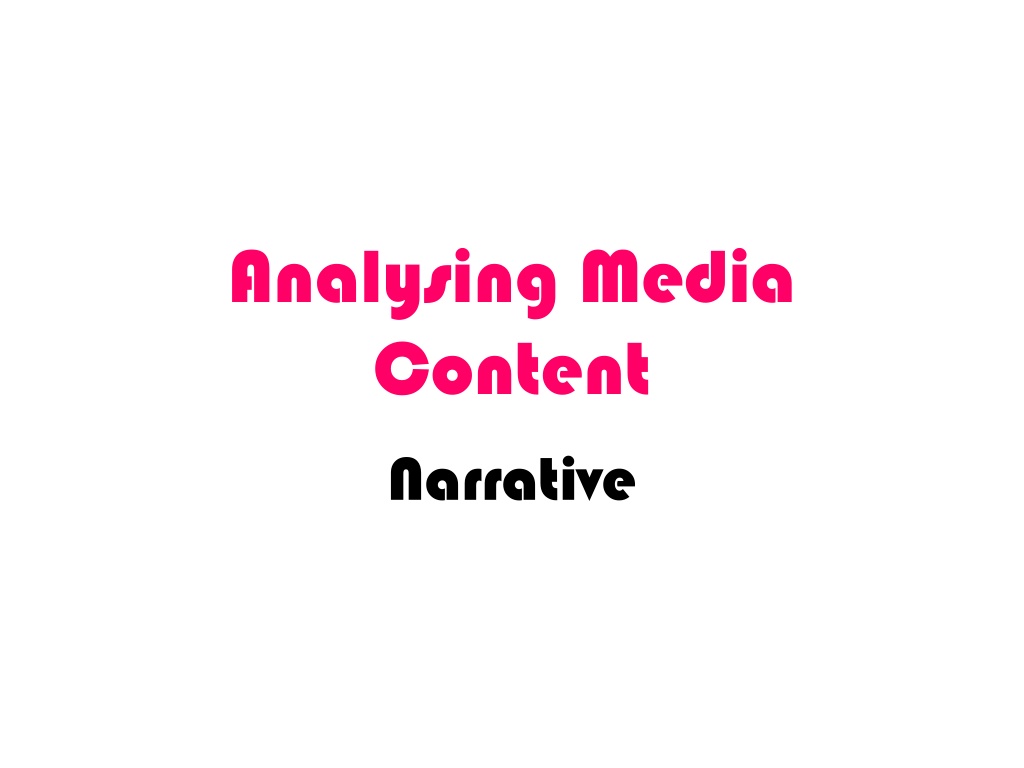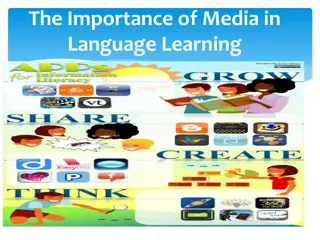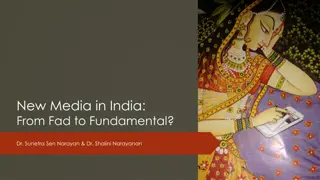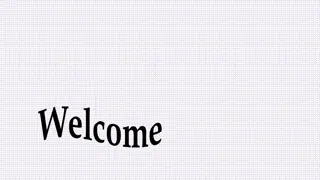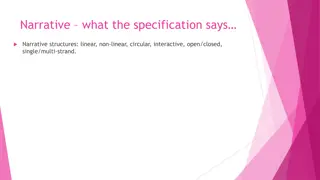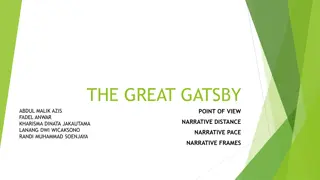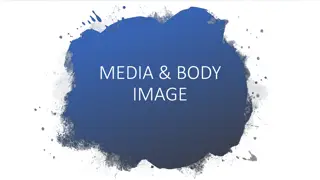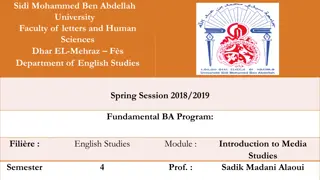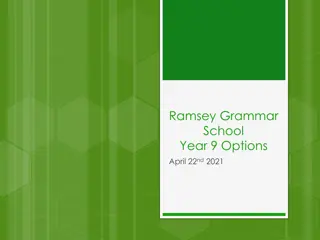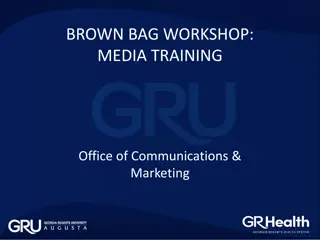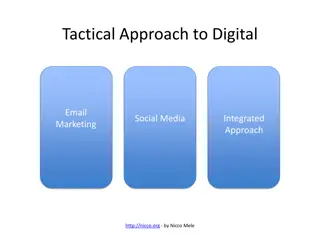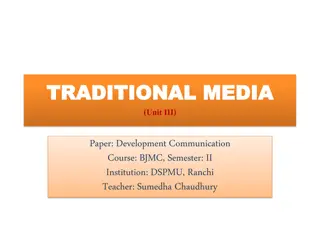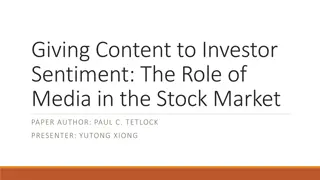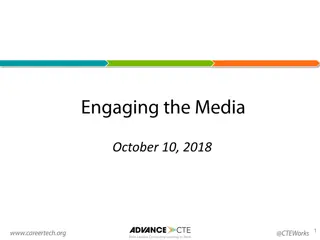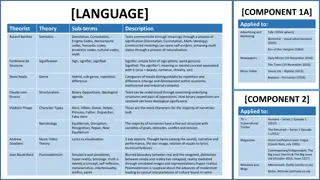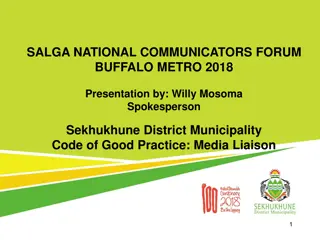Narrative Structures in Media Content
Narrative in media content involves how stories are told, focusing on structure and conventions. Key elements include Todorov's narrative theory, basic narrative structures, and Propp's character spheres of action, all of which shape the way stories unfold in films and other media.
Download Presentation

Please find below an Image/Link to download the presentation.
The content on the website is provided AS IS for your information and personal use only. It may not be sold, licensed, or shared on other websites without obtaining consent from the author.If you encounter any issues during the download, it is possible that the publisher has removed the file from their server.
You are allowed to download the files provided on this website for personal or commercial use, subject to the condition that they are used lawfully. All files are the property of their respective owners.
The content on the website is provided AS IS for your information and personal use only. It may not be sold, licensed, or shared on other websites without obtaining consent from the author.
E N D
Presentation Transcript
Analysing Media Content Narrative
Narrative Narrative is to do with how the story is told, and can be divided into two main areas: structure and conventions. Narrative structure: the rules that tend to be followed when putting a story together and developing it. e.g. Todorov s normality-disruption-normality structure; Levi-Strauss and binary opposition; conflict; resolution (or non-resolution); etc. Narrative conventions: established and expected ways of handling narrative, often related to genre. e.g. cliffhangers; happy endings; enigmas; etc.
Basic Narrative Structure What basic narrative structures do storytellers usually follow? Beginning Middle - End Opening Development Climax - Resolution
Todorovs Narrative Theory Equilibrium/ Normality Return to/ new equilibrium Disruption Repair of Disruption Recognition
Todorovs Narrative Theory: Toy Story Woody rules the nursery Woody and Buzz rule the nursery together Buzz arrives Woody saves Buzz, then Buzz saves Woody s life Woody realises Buzz is new favourite; gets rid of him
Your Turn: Todorov Create a cycle which follows Todorov s narrative theory for a film you know well.
Propps Characters Spheres of Action: Events are dictated by the typical behaviours of a set of archetypal characters: 1.The villain 2.The hero/character who seeks something 3.The donor (provides an object with some magic property) 4.The helper (aids the hero) 5.The princess (reward for the hero/object of villain s schemes) 6.Her father (rewards the hero) 7.The dispatcher (sends the hero on their task) 8.The false hero (appears good; revealed at narrative s end)
Propps Characters Spheres of Action: Indiana Jones and the Kingdom of the Crystal Skull 1.The villain: Irina Spalko 2.The hero/character who seeks something: Indiana Jones 3.The donor (provides an object with some magic property): Professor Oxley 4.The helper (aids the hero): Mutt Williams 5.The princess (reward for the hero/object of villain s schemes): Marion Ravenwood 6.Her father (rewards the hero): Professor Oxley 7.The dispatcher (sends the hero on their task): Dean Charles Stanforth/Mutt Williams 8.The false hero (appears good; revealed at narrative s end): Mac George Michale
Your Turn: Propp Create a list which follows Propp s characters spheres of action for a film. Does it manage to follow all of them? The villain The donor Her father The hero/character who seeks something The helper The dispatcher The princess The false hero
Levi-Strauss and Binary Opposition A fundamental structure of meaning-making lay in the inclusion of binary oppositions, or a conflict between two qualities/elements: good vs evil rich vs poor old vs young east vs west These two elements must do battle , with one side coming out on top (usually the one favoured by the audience the good side).
Levi-Strauss and Binary Opposition Legally Blonde Binary opposition: rebel vs society Although Elle is not a conventional rebel, she is distinctly different from her fellow Harvard students which make up the film s society. By winning over her detractors and winning the court case at the end (freeing a fellow rebel Brooke, who is a similar character to Elle), Elle - the rebel - triumphs over the society which has tried to reject her and her values.
Your Turn: Levi-Strauss Explain how a film you know well follows Levi- Strauss s binary opposition narrative theory. Does that film have more than one binary opposition? good vs evil old vs young weak vs powerful man vs woman rich vs poor east vs west rebel vs society smart vs stupid
Narrative Conventions Narrative conventions are when a story develops in an established way, so the audience is able to guess how the story will progress. These are often related to the genre of the text. Examples are: cliffhangers, happy endings, enigmas. You should be looking for where the conventions are followed, and for when the conventions are subverted. List all the narrative conventions you can think of for five different genres. Think of one film for each genre and assess whether it follows the conventions or subverts them.
